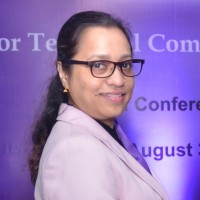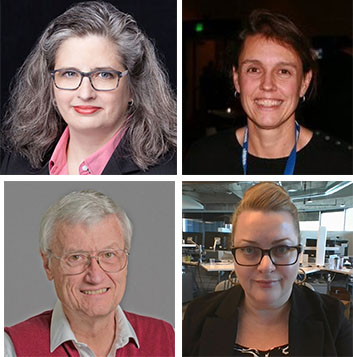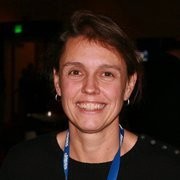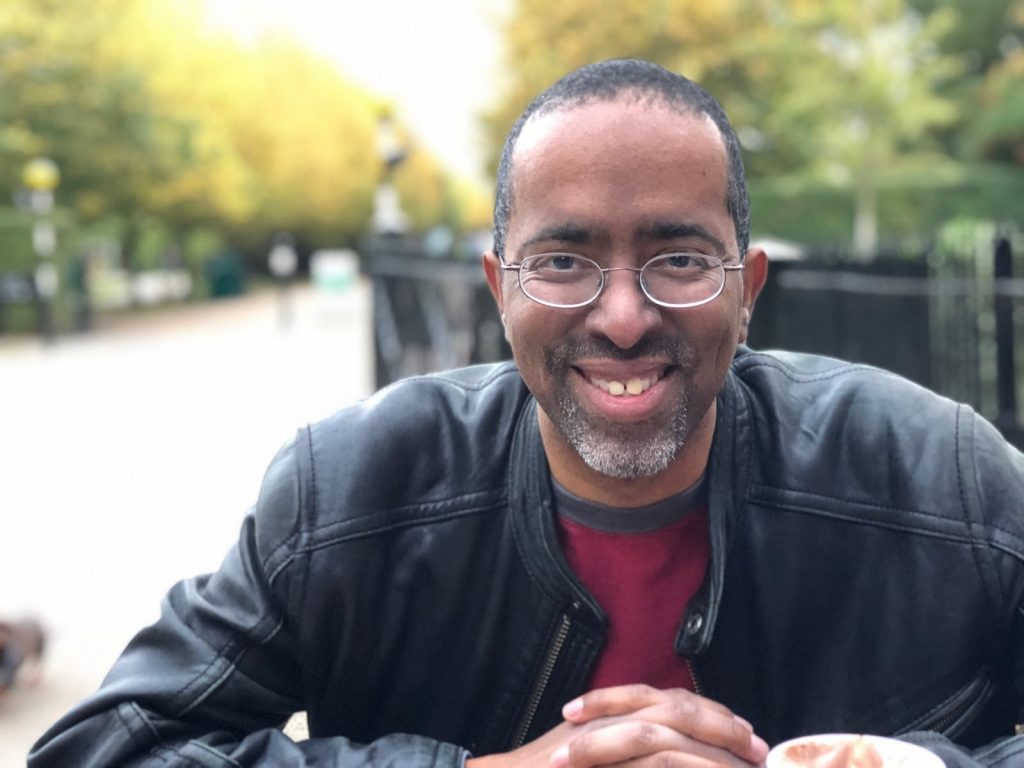Insights and Inspirations
Enjoy extended talks by industry leaders on critical issues facing technical communicators today. Each Insights and Inspirations session includes their presentation followed by a “Dialog with Dawn,” to delve further into their topic and pose questions from the audience. (More Insights coming soon)
| 03:00 – 04:30 EDT | 09:00 – 10:30 CEST | 08:30 – 09:30 EDT | 14:30 – 15:30 CEST | 14:00 – 15:30 EDT | 20:00 – 21:30 CEST |
Let’s Blur the Lines Between Content and Technology! |
How Intelligent Is Your Content? |
The Power of Inclusive Language Practices |
 Dr Anu Singh
Dr Anu SinghSenior Manager at Fiserv |
 Michael Iantosca
Michael IantoscaSenior Director of Content Platforms at Avalara |
 Toni Mantych, ServiceNow
Toni Mantych, ServiceNowSarah Leritz-Higgins, Siemens Digital Industries Larry Kunz, Extreme Networks Angela Browne, SAP SuccessFactors |
| 03:00 – 04:30 EDT | 09:00 – 10:30 CEST | 08:30 – 10:00 EDT | 14:30 – 16:00 CEST | 14:00 – 15:30 EDT | 20:00 – 21:30 CEST | 17:30 – 19:00 EDT | 23:30 – 01:00 CEST |
Finding the Proverbial Needle In a Haystack |
Unveiling the Free, Flexible World of Knowledge |
Quality Is Never an Accident |
“That’s great, but how do I convince my boss?”: Overcoming Bias to Advocate for Change |
 Dawn Stevens
Dawn StevensPresident/Owner of Comtech Services |
 Cruce Saunders
Cruce SaundersFounder and Principal at [A] |
 Dawn Stevens, Comtech Services
Dawn Stevens, Comtech ServicesKathy Madison, Comtech Services |
 David Dylan Thomas
David Dylan ThomasAuthor, speaker, filmmaker |
Title
Abstract
Meet the presenter

Bio
Title
Abstract
Meet the presenter

Bio
Quality Is Never An Accident
In an environment where many organizations are eliminating the editor’s role, how does that affect the quality and usefulness of our content? How do organizations define quality? What’s most important; content clarity, accuracy, conciseness, consistency, or relevance? Which tools and style guides are used in technical communications to ensure high-quality content? In 2020 the Center for Information-Development Management (CIDM) surveyed its members to explore trends in establishing and following quality standards in technical publications. Join Dawn Stevens and Kathy Madison as they share and analyze the survey results.
Meet the presenters

Dawn Stevens is the President, and owner of Comtech Services and the Director of the Center for Information-Development Management. With over 25 years of experience, including 15 years at Comtech, Dawn has practical experience in virtually every role within a documentation and training department, including project management, instructional design, writing, editing, and multimedia programming. With both engineering and technical communication degrees, Dawn combines a solid technical foundation with strong writing and design skills to identify and remove the challenges her clients face in producing usable, technical information and training.

Kathy Madison brings over 30 years of experience to her roles as CIDM Member Liaison and Consultant at Comtech Services. With her background in software engineering, product training, management, marketing and sales, she is able to assist members and clients in a variety of ways to address their challenges. She has been at Comtech for five years and helps with process maturity assessments, user studies and conducts the annual CIDM benchmark studies.
How Intelligent Is Your Content?
How intelligent is your content? Or more precisely, how intelligent is your content supply chain? Can your supply chain learn? A cognitive content supply chain can provide dynamic and truly responsive one-on-one personalization that is built upon an architecture that uses content delivery intelligence. It needs to be built on what Michael calls Intelligent Object Retrieval using structured knowledge assets. Knowledge assets, such as taxonomy, ontology, knowledge graphs, combined with cognitive AI services and Intelligent Content, are required to achieve adaptive, pro-active, and autonomic content built upon a single intelligent content architecture. As a bonus, attendees will gain access to Michael’s full fifty-page paper that dives into much greater detail. Join Michael as he provides a visionary glimpse of the future.
Meet the presenter
 Michael Iantosca is the Senior Director of Content Platforms at Avalara Inc. Michael spent 38 of his 40 years at IBM as a content pioneer – leading the design and development of advanced content management systems and technology that began at the very dawn of the structured content revolution in the early 80s. Dual trained as a content professional and systems engineer, he led the charge building some of the earliest content platforms based on structured content. If Michael hadn’t prevailed in a pitched internal battle to develop an XML platform over a planned SGML variant called WebDoc in the mid-90s at Big Blue, DITA, and the entire industry that supports it, might not presently exist. He was responsible for forming the XML team and a member of the workgroup at IBM that developed DITA.
Michael Iantosca is the Senior Director of Content Platforms at Avalara Inc. Michael spent 38 of his 40 years at IBM as a content pioneer – leading the design and development of advanced content management systems and technology that began at the very dawn of the structured content revolution in the early 80s. Dual trained as a content professional and systems engineer, he led the charge building some of the earliest content platforms based on structured content. If Michael hadn’t prevailed in a pitched internal battle to develop an XML platform over a planned SGML variant called WebDoc in the mid-90s at Big Blue, DITA, and the entire industry that supports it, might not presently exist. He was responsible for forming the XML team and a member of the workgroup at IBM that developed DITA.
Finding The Proverbial Needle In A Haystack
With the plethora of content available to users today, it’s often a wonder that they are able to find any relevant information to their queries. In fact, it’s the most common complaint I hear when conducting user studies for my clients: “I can’t find what I’m looking for in a reasonable amount of time.” What can we as technical writers do to address that complaint? We hear a lot about taxonomies and metadata and their potential influence in making our content more findable. However, Google uses over 200 ranking factors in its search algorithm that go well beyond this basic categorization. Surprisingly, a significant number of these ranking factors fall clearly within the realm of a technical writer’s responsibilities. In this rapid fire presentation, Dawn presents dozens of proven and speculative factors that you as a technical writer can address to optimize your content for findability.
Meet the presenter

Dawn Stevens is the President, and owner of Comtech Services and the Director of the Center for Information-Development Management. With over 25 years of experience, including 15 years at Comtech, Dawn has practical experience in virtually every role within a documentation and training department, including project management, instructional design, writing, editing, and multimedia programming. With both engineering and technical communication degrees, Dawn combines a solid technical foundation with strong writing and design skills to identify and remove the challenges her clients face in producing usable, technical information and training.
Let’s Blur the Lines Between Content and Technology!
A handful of content now sounds like a distant past, something from the monolithic period or so. We live in a technology world that is super flooded with content from OTT to MOOC and acronyms as well. However, with the recent COVID-19 experiences, the need to feel safe and cared for has become a new product prerequisite.
This means that it is critical to relook our content development approach to reach people with content that matters to them – where, when and how they want it – so that they feel safe and well-supported for accomplishing a task. It is now important to look at information from a completely different perspective and instead of focusing on technical details for users to read, it’s now imperative to curate information effectively to cater to the human information needs leveraging technology.
This also highlights the need to build content based on what the user needs with the technology they are using rather than delivering content as a standard package. The traditional PDFs must be complimented by technology and new content products that uses multi-media and multi-platform. This is an important aspect to consider as with the more intuitive products and smart devices, creating a personalized experience with the content that is credible, concise and usable to the content consumer is needed.
Here comes chat bots and micro-learning and a platterful of technology to use for creating a personalized experience that could turn into a just-in time learning opportunity. As technical communicators and content strategists, we must leverage technologies that learn and enrich the product experiences and balance experiential learning by providing a quick access to right-easy-to-understand information just when a user needs it, intelligently.
This the new Technical Content Industry 4.0, and from the language of the product origination, we are shifting to the language of users. Alexa is learning!
Meet the presenter

Dr Anu Singh’s mission is to close the gap between experiential learning of a user on products they use for the first time through content. Anu’s expertise is helping business ensure the success of customers by supporting their product adoption journey. Anu possesses numerous degrees and certifications, and over 16 years of progressive experience in wide range of technical and non-technical areas including software documentation development, project management and leadership.
Anu is a creative disrupter who believes in the enormity of the human mind, its thoughts, feelings and the social paradigm it creates and coexists in. Her hobbies include learning, teaching, painting and travelling.
The Content Strategy of Civil Discourse: Turning Conflict into Collaboration
In the current political climate, it seems like we’ve all but given up on productive, respectful discourse. However, there are simple design and content strategy choices we can make that encourage collaboration over conflict, even when dealing with hot-button issues. In this session we’ll look at real-world examples of how the way we phrase a question or design an interaction can have a huge impact on the quality of conversation, and the three rules they share.
Meet the presenter

David Dylan Thomas is the author of the book Design for Cognitive Bias from A Book Apart and is the creator and host of the Cognitive Bias Podcast. He has developed digital strategies for major clients in entertainment, healthcare, publishing, finance, and retail. He has presented at TEDNYC, SXSW Interactive, Confab, An Event Apart, LavaCon, UX Copenhagen, Artifact, IA Conference, Design and Content Conference, and the Wharton Web Conference on topics at the intersection of bias, design, and social justice.
“That’s great, but how do I convince my boss?”: Overcoming Bias to Advocate for Change
It’s one thing to know what your organization should be doing, but that’s not always enough to convince the people who sign the checks. How do you get them on board? In this talk, David Dylan Thomas, author of Design for Cognitive Bias, will talk about the biases that drive organizations to make counterproductive and sometimes unethical choices, and what we can do about it. You’ll come away with a greater understanding of how to fight bias with bias to navigate some of the risk-averse, short-sighted, and poorly-incentivized habits organizations and clients often fall into.
Meet the presenter

David Dylan Thomas is the author of the book Design for Cognitive Bias from A Book Apart and is the creator and host of the Cognitive Bias Podcast. He has developed digital strategies for major clients in entertainment, healthcare, publishing, finance, and retail. He has presented at TEDNYC, SXSW Interactive, Confab, An Event Apart, LavaCon, UX Copenhagen, Artifact, IA Conference, Design and Content Conference, and the Wharton Web Conference on topics at the intersection of bias, design, and social justice.
Unveiling the Free, Flexible World of Knowledge
When the world moves quickly and unpredictably, our content must also adapt at a rapid pace.
Too often is content locked into structures and platforms that serve a single use, condemning content assets to an artificially limited life. It’s time to evolve!
In this sweeping presentation, hear a vision for how to resurface latent value in organizations by reimagining how content is modeled and managed in a decoupled content supply chain.
As an industry, do we see content structures in a single limited form? It’s time to move towards a kaleidoscopic understanding of content’s structure that itself can adapt. Find out how content can have a fractal impact in a broader world, outside of one fixed schema…without destroying any current systems.
The future requires flexible models, new organizational structures, and nimble processes to support the next generation content supply chain. Patterns for content intelligence enable context-adaptive experiences. Multi-channel delivery serving chatbots, voice assistants, augmented reality, embedded systems, and consumer devices. And, we need to be ready for any other unique formats the future can throw at us.
Leverage the past 20 years’ investments AND unlock the fluid world of knowledge. Activate any content producing organization and elevate content assets beyond cost and into a source of ongoing power.
Meet the presenter
 Cruce Saunders is the founder and principal at [A], the content intelligence service (simplea.com), and author of Content Engineering for a Multi-Channel World. Cruce and the [A] team work with content leaders driving change at the leading enterprise content publishers on Earth. Together with clients, they craft the next generation of the content supply chains and publishing architecture that powers intelligent customer experiences.
Cruce Saunders is the founder and principal at [A], the content intelligence service (simplea.com), and author of Content Engineering for a Multi-Channel World. Cruce and the [A] team work with content leaders driving change at the leading enterprise content publishers on Earth. Together with clients, they craft the next generation of the content supply chains and publishing architecture that powers intelligent customer experiences.
He regularly speaks on omnichannel customer experience, content intelligence, content models, AI, chatbots, personalization, content structure and semantic standards, and intelligence transformation.
Cruce also hosts a podcast, Towards a Smarter World, where he connects with leaders impacting global intelligence. Follow him on Twitter at @mrcruce.
The Power of Inclusive Language Practices
As technical communicators, we understand the importance of having a solid understanding of our users. Our audience influences the topics we include, the tone we take, and even the words we use. We strive to encourage user engagement, to make our content welcoming, so that it becomes a first line of defense when solving a problem or learning to complete a new task. However, some approaches have perhaps made it more difficult for people to relate to our content and get the information they need. Many companies are now actively examining their content with the goal of removing and replacing content that might exclude or marginalize members of their target audiences. The panel shares the actions they are taking.
Potential discussion questions:
- How can documentation accommodate diversity in users?
- What specifically are your companies doing to make your content more inclusive?
- What terms have been specifically targeted?
- Where do you stand on using “they” as a singular pronoun?
- Last year, the point was made that accessibility is properly a subset of inclusivity. What measures are you taking to ensure accessibility of content?
- What accommodations might need to be in delivery strategies to improve accessibility?
- How are globalization and localization related to inclusivity?
- How do you measure inclusivity? Accessibility?
- What is the financial impact of making content more inclusive or accessible?
Meet the presenters
 Toni Mantych is Senior Director of Product Content at ServiceNow, where she leads a large, globally distributed technical content group and drives cross-functional content experience initiatives. Before joining ServiceNow, she was Director of Content Strategy and Architecture at ADP and taught numerous graduate courses in the Technical and Professional Writing program at Portland State University. She frequently speaks and leads workshops on content strategy and content experience topics. She also helps drive Diversity, Inclusion, and Belonging (DIBs) efforts within ServiceNow and is a member of the inaugural Diversity, Equity, and Inclusion Advisory Panel for the Society for Technical Communication.
Toni Mantych is Senior Director of Product Content at ServiceNow, where she leads a large, globally distributed technical content group and drives cross-functional content experience initiatives. Before joining ServiceNow, she was Director of Content Strategy and Architecture at ADP and taught numerous graduate courses in the Technical and Professional Writing program at Portland State University. She frequently speaks and leads workshops on content strategy and content experience topics. She also helps drive Diversity, Inclusion, and Belonging (DIBs) efforts within ServiceNow and is a member of the inaugural Diversity, Equity, and Inclusion Advisory Panel for the Society for Technical Communication.

Sarah Leritz-Higgins is the Manager of Product Information Design and Development at Siemens Digital Industries Software.

Larry Kunz is a Product Manager at Extreme Networks.
 Angela Browne has been a technical communicator for 20 years and currently leads a team of writers at SAP SuccessFactors. As a design thinking coach, she works with teams across the organization to better understand their users and design solutions that meet their needs. On her own team, she’s spent the last few years driving strategic initiatives around content transformation, taxonomy, and conversational interfaces.
Angela Browne has been a technical communicator for 20 years and currently leads a team of writers at SAP SuccessFactors. As a design thinking coach, she works with teams across the organization to better understand their users and design solutions that meet their needs. On her own team, she’s spent the last few years driving strategic initiatives around content transformation, taxonomy, and conversational interfaces.
2020 Retrospective: Challenges, Successes and the “New Normal”
Perhaps we’ve analyzed and talked about the pandemic to death, but we’d be ignoring the elephant in the room, if we didn’t acknowledge that 2020 changed the way we work. Panelists share their perspectives on the changes made, for better or worse, and provide insights and suggestions for building on the new foundations laid.
Potential discussion questions:
- So much of the news about the pandemic focused on the negative. What are positive things that have come out of it in terms of the workplace?
- How can we build on the lessons learned in the last year?
- What do we still need to learn?
- Will we revert? Or are these changes here to stay – the new normal?
- We tend to focus on the impact to the way we work, but what do we need to consider about our work products? How have our users been impacted? Do they have new needs and expectations due changes in their own lives? Should we revisit our user personas? How might our content strategy need to change to accommodate new user experiences and expectations?
How can our departments be better prepared for these types of unanticipated changes in the future?
Meet the presenters

As a director of user assistance at NextGen, Vlad’s focus is on developing and implementing a content strategy designed around principles of minimalism, user-centered design, and DITA. Vlad led his team to successful implementation of DITA and git/oxygen toolchain and then successfully overcoming the challenges presented by 2020.
A writer by trade, Vlad has been building and leading teams for the past 10 years across multiple product lines, locations and continents.

Anna N Schlegel is Vice President of the Global Portfolio-to-Market organization at NetApp. In her role, she oversees a variety of teams, including: Enterprise Globalization, Information Engineering, and Product Portfolio Solutions. Anna has worked in the tech industry in the Silicon Valley for over 20 years, leading teams at Cisco, VMWare, Xerox, and Verisign.
Anna serves as the Global Executive Sponsor of NetApp’s Women in Technology organization, where she focuses on developing female leaders in the tech industry. She is also the co-founder of Women in Localization, the leading professional organization for women in the Localization industry with over 5000 members worldwide.
Anna speaks 6 languages, is a native of Catalunya, and lives with her family in Santa Clara, California.

Lisa Hultman is a Director of Product Content at ServiceNow. She has extensive experience leading technical training and writing teams building content for both software and hardware solutions. She is super passionate about cross-functional collaboration to ensure consistent messaging for customers. Having had her organizations fall under Sales, Marketing, Engineering, Product Management, HR and even Finance over the years, she is well versed in collaborating with all functional teams.


